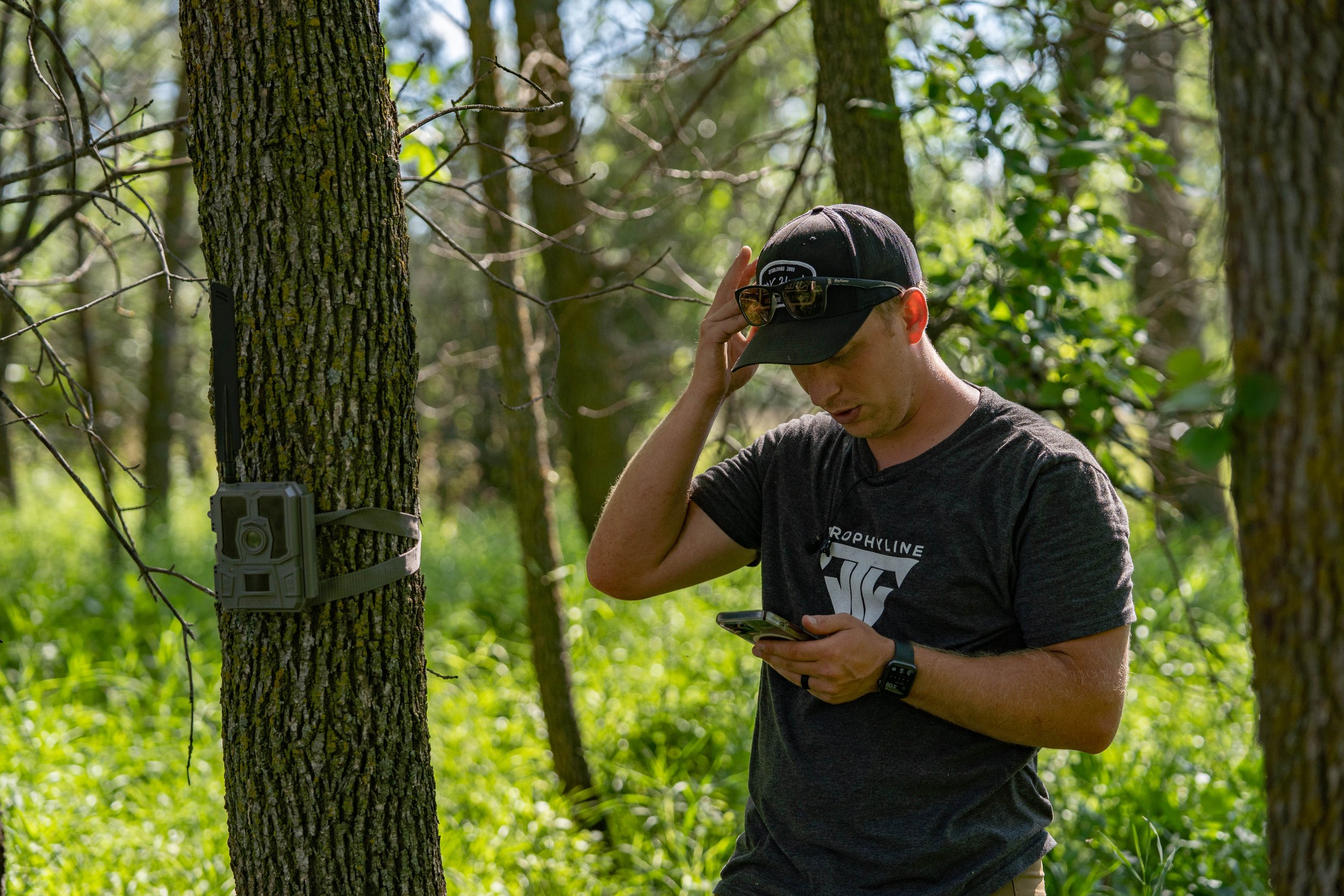By Alex Comstock
Trail cameras are a tool that you can use throughout the entire year, not just during deer season. So how can trail cameras be helping you in February? Well today, that’s what this blog post is all about.
Shed Hunting Help
In my mind, trail cameras can be a big help to you when it comes to shed hunting. What I mean by this is they can help you specifically when it comes to determining when to start shed hunting. This is a topic I think some people struggle with. Deer season is over, there isn’t much to do out in the deer woods, and you want to start finding antlers. Heck, maybe you see a half rack buck, and that adds fuel to the fire to get out right now. But, just because you do see a half rack buck, that doesn’t mean all of the bucks have shed. So, the question then becomes, how do you know when to start shed hunting? One helpful resource is this article I wrote last month, “Here’s How To Figure Out When To Start Shed Hunting”, and one of the tactics I touch on is using trail cameras. Below, I’ve included a video on the topic, and then I’ll talk about it more below the video.
To recap the video, I like to run trail cameras and then when I’m checking them, I’m looking at how many antlered buck I have on camera, compared to the amount of shed bucks. One thing I didn’t cover in the video is that a great place to have your camera is on some type of food source, where you’re more likely to get more pictures of deer. Once you start pulling SD cards and have more shed bucks than antlered bucks on camera, that can be your indication that it’s time to start searching for sheds.
Conclusion
If you jump right into an area not knowing if bucks had shed or not, and they haven’t, you could just be pushing bucks out of an area before they even shed, and therefore lessen your chances of finding antlers at all. Patience can be required this time of year. By utilizing those trail cameras, you can be better prepared on when to get out there and start putting on the miles, which hopefully results in some amount of piles.

• 100% combed and ring-spun cotton (Heather colors contain polyester)
• Fabric weight: 4.2 oz/yd² (142 g/m²)
• Pre-shrunk fabric
• Side-seamed construction
• Shoulder-to-shoulder taping
• Blank product sourced from Guatemala, Nicaragua, Mexico, Honduras, or the US
• 60% cotton, 40% polyester
• 100% polyester mesh back
• Structured, 6-panel, mid-profile cap
• Pre-curved contrast stitched visor
• Underbill matches visor color
• Adjustable plastic snapback
• Blank product sourced from China
• 100% cotton face
• 65% ring-spun cotton, 35% polyester
• Front pouch pocket
• Self-fabric patch on the back
• Matching flat drawstrings
• 3-panel hood
• Blank product sourced from Pakistan
• 100% combed and ring-spun cotton (Heather colors contain polyester)
• Fabric weight: 4.2 oz/yd² (142 g/m²)
• Pre-shrunk fabric
• Side-seamed construction
• Shoulder-to-shoulder taping
• 100% combed and ring-spun cotton (Heather colors contain polyester)
• Fabric weight: 4.2 oz/yd² (142 g/m²)
• Pre-shrunk fabric
• Side-seamed construction
• Shoulder-to-shoulder taping
• 100% cotton
• Sport Grey 90% cotton, 10% polyester
• Fabric weight: 5.0–5.3 oz/yd² (170-180 g/m²)
• Open-end yarn
• Tubular fabric
• Taped neck and shoulders
• Double seam at sleeves and bottom hem
• 50% pre-shrunk cotton, 50% polyester
• Fabric weight: 8.0 oz/yd² (271.25 g/m²)
• Air-jet spun yarn with a soft feel and reduced pilling
• Double-lined hood with matching drawcord
• Quarter-turned body to avoid crease down the middle
• 1 × 1 athletic rib-knit cuffs and waistband with spandex
• Front pouch pocket
• Double-needle stitched collar, shoulders, armholes, cuffs, and hem





































